“A few poorly intonated sustained bends in a solo can make the guitar's most emotive technique sound bad”: Learning how to bend strings correctly is one of the quickest ways to make your playing sound better
String bending is a core technique for lead playing. Here's how to take it from beginner to pro

String bending is an essential part of a guitarist’s toolkit. While the technique can be daunting at first, if you work on the fundamental technique and good bending intonation, you will be on your way to developing this emotive sound.
From B.B. King to Joe Satriani and Eric Clapton to Van Halen, string bending isn’t confined to a single genre and its vocal qualities bring any solo to life. Take iconic solos like Sweet Child O' Mine or Comfortably Numb: remove those intro bends and you are left with a less impactful sound.
There are several elements to consider when you start string bending. First is the fretting hand's function: in order to develop strength and stability hook the fretting hand thumb over the top of the neck for support.
Next, ensure that you have one or two fingers behind the bending finger for additional strength and to avoid strains. The third finger is generally the most common for bending but there are also times when the second finger can be used with support from the first finger behind it.
Bending with the first finger is possible but less common and usually dependent on where you have to move to after the bend. With these elements in place the bend comes from an upward twist of the wrist that shouldn’t feel forced.
Let's take a closer look at where you should place your fingers for optimum bending technique.
Technique check
1. Before bending…
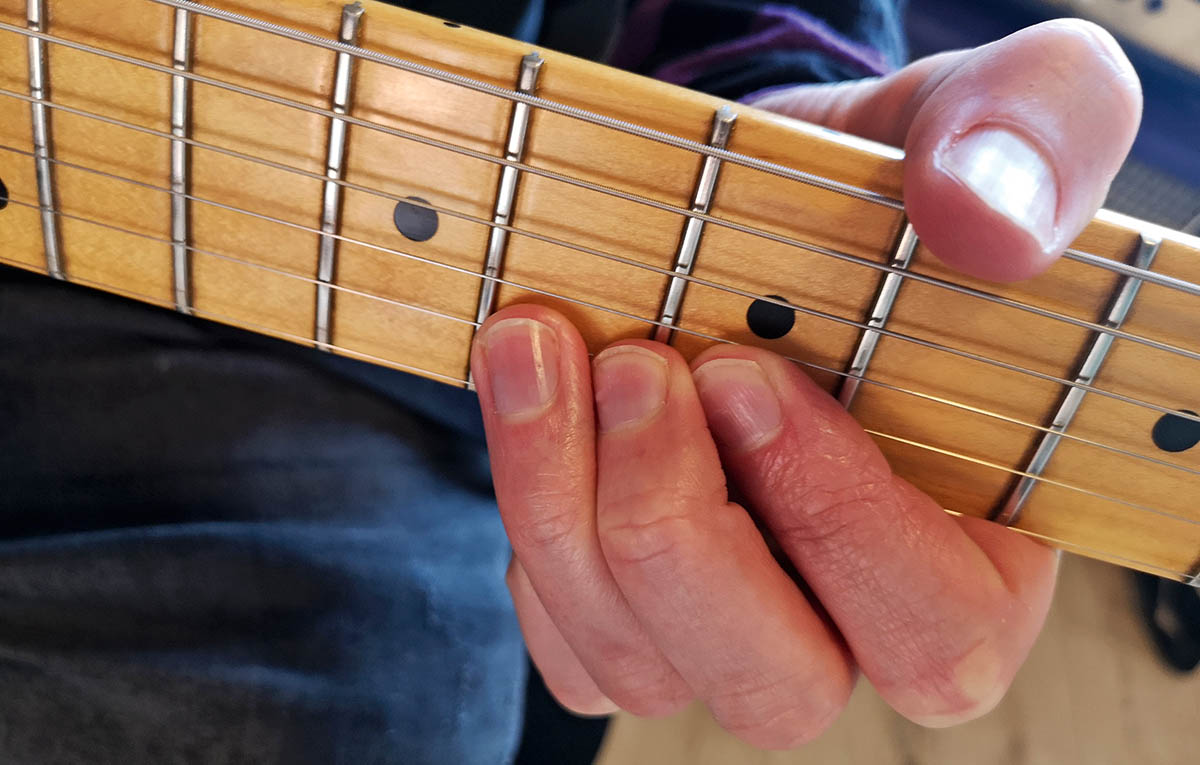
...position your fingers together for extra support, put your thumb over the neck for leverage, and press your first finger knuckle against the neck as a fulcrum.
2. Executing a bend
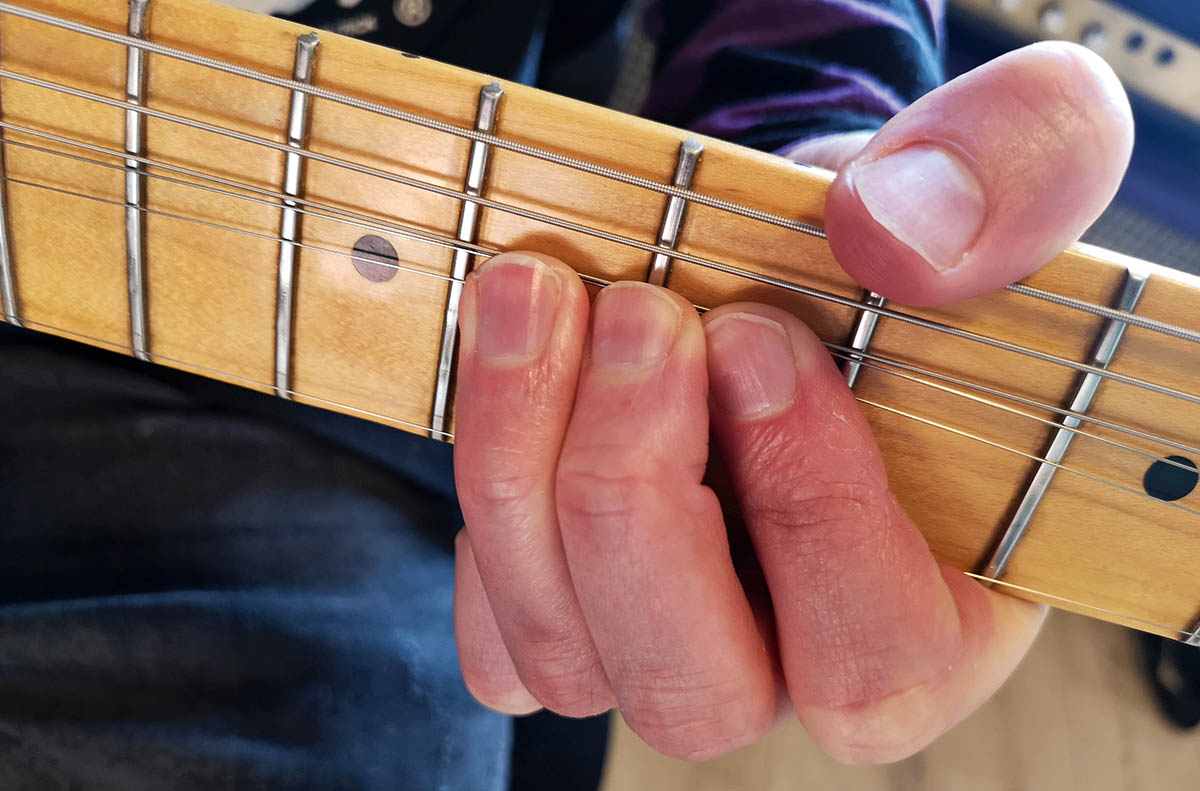
The curve and shape of your fingers shouldn’t change much from the pre-bent position, because your wrist does the work.
3. Fourth-finger bends
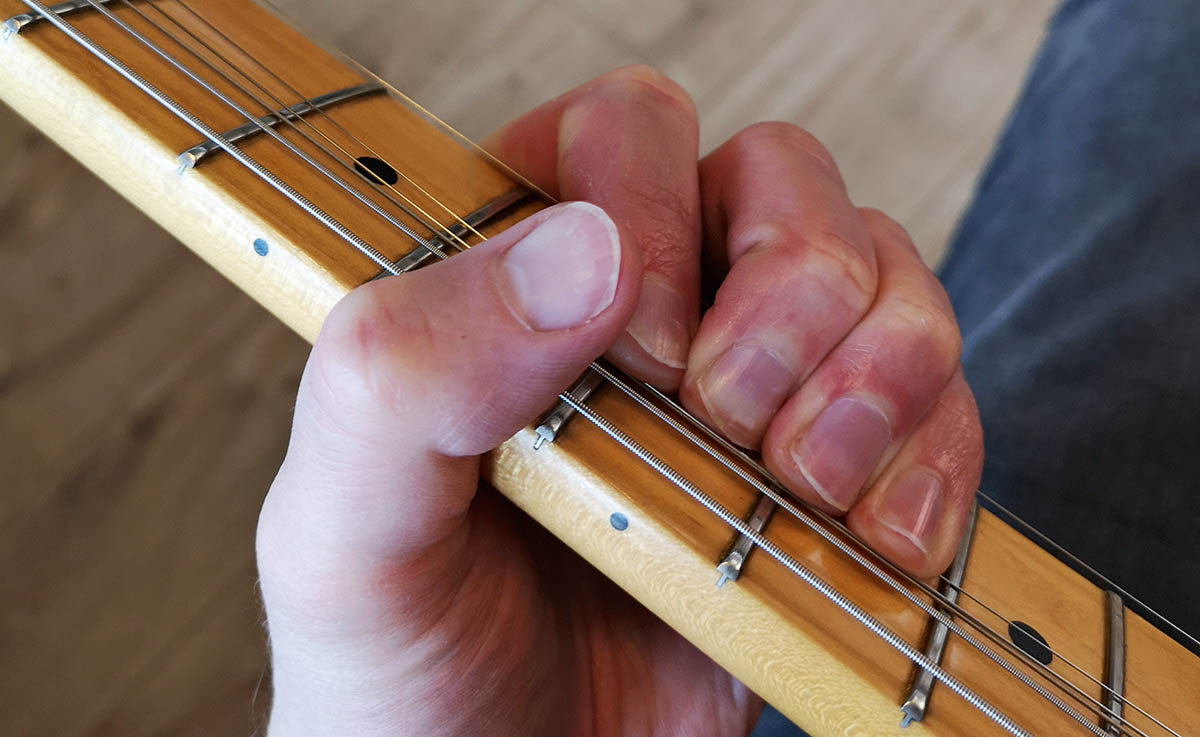
Fourth-finger bends are tough – it’s everyone’s weakest digit! Use as many spare fingers as you can to share the load.
With the physical elements covered, the main focus is the musical result of having good intonation: bending to a note that is in tune with the music. It’s easy to fall flat or sharp here with either too little or too much energy applied to the bend.
A good tip is to play a fretted note, remember that pitch, then go down to a lower note and bend up to the required note. Switching between the standard fretted note and then the bent note will develop your sense of pitch and make your bends musical.
Remember, a few poorly intonated sustained bends in a solo can make the guitar's most emotive technique sound bad.
It's worth bearing in mind that your bending ability is linked to your choice of string gauge. When you start, the slacker feel of a 0.09 - 0.42 string set allows for smooth bending to desired notes.
But you may find you over bend too often so you'll need to either adjust your strength or opt for a heavier set to compensate such as 0.10 (this gauge refers to the first string; people often ask in a shop for a set of 10s which means a 0.10 first string and then default string thicknesses for the other five strings).
There is no correct choice here so go for what feels best for you. On the light side, Billy Gibbons prefers 0.07s for effortless playing, Brian May has remarked on liking 0.08 gauge whereas Josh Smith opts for a hefty 0.13 for his blues riffs and solos.
Finally, players mostly bend on the first, second and third strings as it's easier and better suited for soloing. That being the case, the examples played in the above video and tabbed below focus on only these strings. All the bends will be drawn from the A blues scale (A, C, D, Eb, E, G).
Tab examples
Example 1 - semitone bend on the third string
Bends are generally pitched a tone (2 frets' worth) or semi-tone (1 fret's worth) above the fretted note, so we’ll start with the smaller semi-tone bend on the third string, D bending to Eb.
To reduce unwanted string noise, place the picking hand palm on the strings below the one you are bending. Low strings are louder and can feedback sooner than higher strings so this is the first approach to playing more cleanly.

Example 2 - tone bend on the third string
Next we’ll bend up a tone (2 frets' worth) on the third string, D to E. The rhythms are very simple but remember that there are endless possibilities when it comes to rhythm and string bending – everything from rapid up and down to sustained string bends are possible.
When you’ve worked on this one explore changing the rhythm of what you are playing.

Examples 3a and 3b - bend repetition on the third string
Strength and stamina (not brute force!) are key components of string bending and repetition is a vital skill to have.
In the following examples, semitone and tone bends are repeated four times in a row which is a great way for developing the ear, ensuring you can bend to the target pitch each time.


Examples 4a and 4b - bending on the first string
String bends feel different on each string because of the pressure required to hit the target note. Bending on the first string can be more of a challenge so you may have to put more force into the upward twist of the wrist to meet the target note.
When you move to the second string you’ll need slightly less pressure: this constant compensation of force is part of what controlled bending is all about.
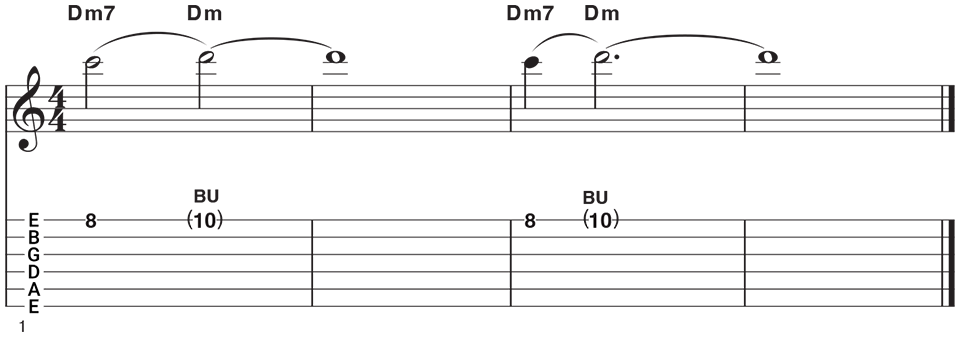

Examples 5a and 5b - bend repetition on the first string
As with the earlier examples, here are the bends on the first and second strings with some repetitions.
Don’t overdo it here as wrist strain and finger injuries are possible if you are new to string bending. It’s better to do brief repetitions like this and then work on a different technique.
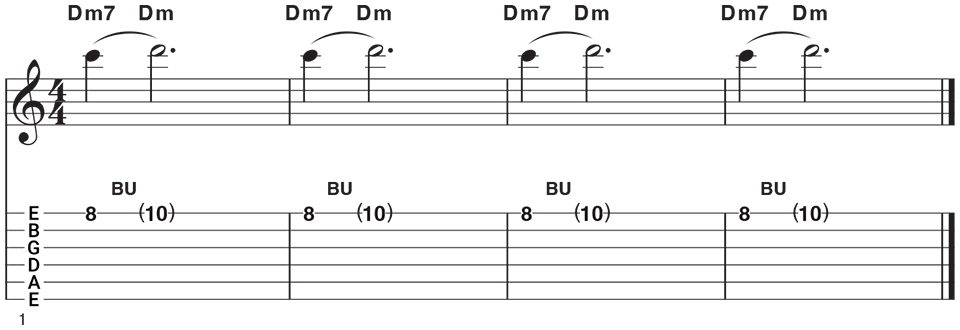

Example 6 - Final piece featuring tone and semitone bends
Here, everything is put into practice in a Jeff Beck-inspired track. The rhythms are simple and the licks are melodic so when you’ve played this a few times consider changing the rhythms and adding more notes.
Finally, when you have mastered this solo, add vibrato on top of the sustained bends. This will add further emotion to your playing if you do it right: bend up to the target note, drop the bend down a little then bend back up to the target note.
This can be repeated for as long as you want, with pitching width and repetition speed both worth exploring. The main focus is to keep returning to the target note; don't have it wander due to inconsistent over or under bending.
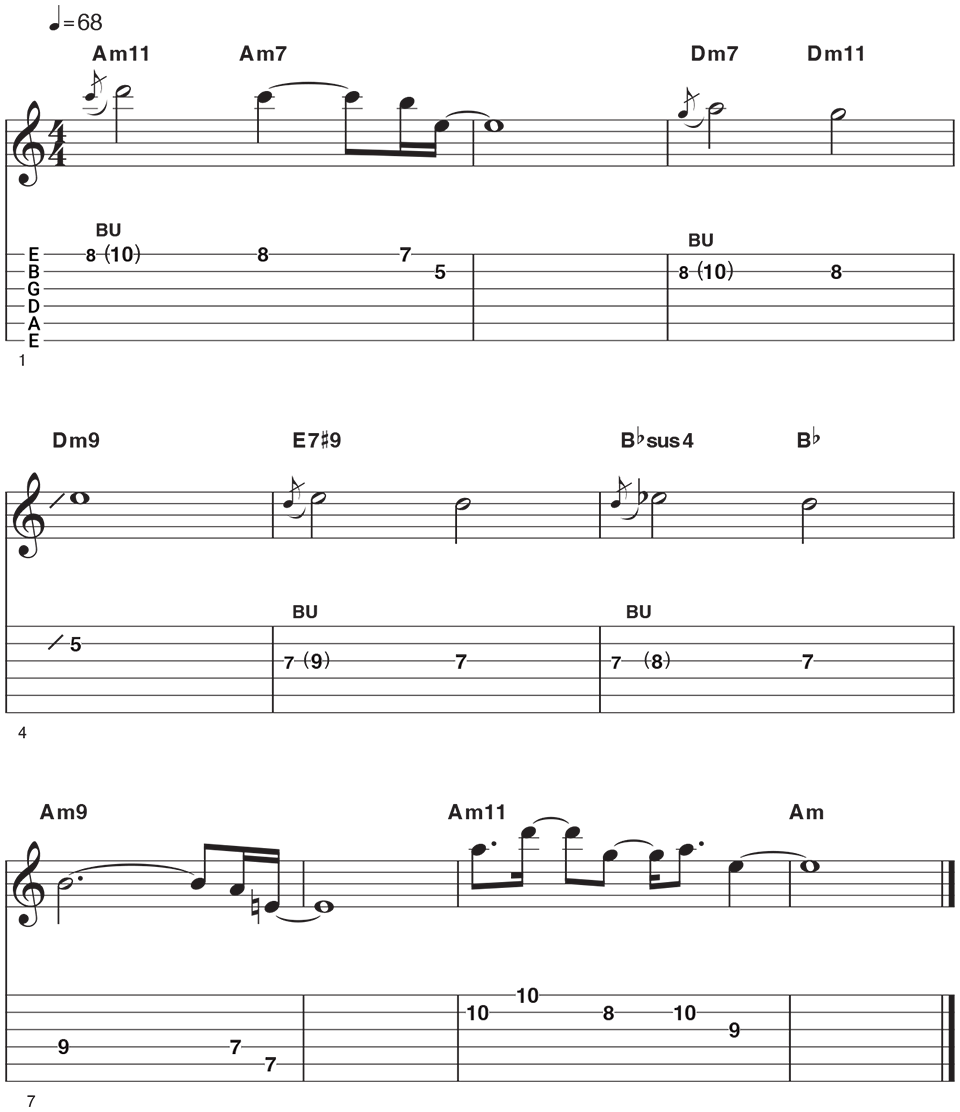
Three legendary string-bending guitarists
Pink Floyd - Comfortably Numb
David Gilmour is well known for his tone and melodic soloing but his string bending mastery is at the heart of it all.
The solo from Comfortably Numb is a masterclass in pitching bends and sustaining them – they transcend technique and become a vocal compositional device.
Guns N' Roses - Sweet Child O' Mine
Slash’s thick tone is perfect for long, sustained string bends. He’ll often display his control of the technique by bending up to pitch and down again with several repetitions in between.
BB King - Live At The Regal
Before the birth of rock, blues players used string bending to mimic the sound of the voice, especially workers singing field songs.
Listen to B.B.’s Live At The Regal with songs such as Everyday I Have the Blues and Sweet Little Angel – his bending control is often capped off by an almighty singing vibrato placed on top of the bend.
For many music fans, B.B. King had the most soulful string bending ever and his 'King of the Blues' crown was confirmed because of this iconic album.
Get The Pick Newsletter
All the latest guitar news, interviews, lessons, reviews, deals and more, direct to your inbox!
Stuart Ryan is best known for his acoustic guitar playing, from Celtic fingerpicking and traditional folk to modern percussive phrasing and fresh interpretations of popular pieces. He has released several solo albums, written pieces for UK examination boards and created nine tutorial books ranging from acoustic guitar arrangements to Americana styles.
- Jason SidwellTechniques Editor – GuitarWorld.com, GuitarPlayer and MusicRadar.com
You must confirm your public display name before commenting
Please logout and then login again, you will then be prompted to enter your display name.












![Joe Bonamassa [left] wears a deep blue suit and polka-dotted shirt and plays his green refin Strat; the late Irish blues legend Rory Gallagher [right] screams and inflicts some punishment on his heavily worn number one Stratocaster.](https://cdn.mos.cms.futurecdn.net/cw28h7UBcTVfTLs7p7eiLe.jpg)


